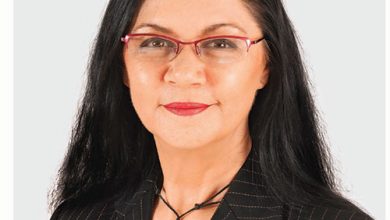CITY SCHOOL OF ARCHITECTURE
Q: What motivated City School of Architecture (CSA) to enter the education sphere?
A: To answer this, we must step back 30 years in the past and evaluate the prevailing conditions in the education system at the time.
There were candidates looking to enter the local university circuit but found themselves unable to do so due to uncontrollable circumstances – viz. missing the cutoff marks for entry or facing financial difficulties in pursuing education in foreign countries.
School leavers were only a part of the overall stake. Those who were already part of the sector – mainly craftsmen and technicians – felt that more could be achieved through the facilitation of proper pathways to obtain valid professional qualifications.
The Sri Lanka Institute of Architects (SLIA) was established to bridge this gap. The first course that was launched enabled those who were interested in gaining professional qualifications to do so in two phases before they qualified as chartered architects.
Then known as the Colombo School of Architecture, CSA was initially a creation of SLIA’s efforts to enhance the curriculum and offer an advanced course for aspiring architects.
Following decades of evolution, the City School of Architecture now stands as a popular degree awarding institution that offers qualifications extended by the University of the West of England.
With accreditations from renowned institutions such as the Royal Institute of British Architects (RIBA) and SLIA, I believe that CSA has become a safe place for those who wish to excel in the art of architecture.
 Q: How do you view the rivalry between public and private education?
Q: How do you view the rivalry between public and private education?
A: I feel that there is no difference in the quality of the product when it comes to architecture – either theoretically or practically.
Courses accredited by SLIA and RIBA have to maintain uniformity in standards regardless of the institution that is offering the programme. Even if the paths might seem different at first, the destination remains the same since everyone will eventually earn recognition as a qualified architect recognised by SLIA.
Q: Do you believe that local talent has what it takes to compete with international practitioners?
A: Certainly – RIBA accreditation automatically assures that the courses students have followed conform to international standards.
Looking at CSA as an example, it is partnering a reputed foreign university. The dual recognition from RIBA and SLIA enables students to make a name for themselves locally or globally depending on where they intend to practise.
There have been instances of students from the UK transferring to CSA to complete their courses and we have noted that the standards they’re accustomed to are nearly identical to what is offered in our institution. Our foreign external examiners have endorsed this as well.
Our intake comprises students who have passed their A-Levels since this is used as a basis to evaluate a person’s level of intelligence in the local education system. However, we firmly believe that the approach to measuring students’ potential is somewhat restrictive – and results on a sheet of paper are insufficient to glean a holistic interpretation of a person’s intelligence.
To remedy this shortcoming, CSA has taken the initiative to subject candidates to an additional filter before enrolment where students are expected to pass an aptitude test. This indicates their capacity to progress in their architectural education.
These factors have enabled us to help students develop a competitive edge once they complete their courses.
 Q: Can Sri Lanka become a hub for higher education – and what can be done to achieve this goal, in your assessment?
Q: Can Sri Lanka become a hub for higher education – and what can be done to achieve this goal, in your assessment?
A: Sri Lanka can certainly evolve into a hub as our education system has always maintained exceptional standards. With a literacy rate of more than 90 percent, our nation is one of few that have produced a handful of great minds in the world.
I feel the first step that needs to be taken to create a hub is to subsidise education in the country. Establishing and maintaining a select set of standards is crucial, and these aspects need to be publicised throughout the region.
Compatibility in terms of currency transfer is yet another factor that needs to be resolved. The solutions I see for these are twofold: creating a system to maintain international standards, and establishing a mechanism to facilitate a fair and reasonable currency exchange.
Other aspects such as visa formalities need to be reviewed. Students should be offered the convenience of obtaining student visas without any hassles.
 Q: How would you describe the competition – and what strategies do you employ to stay ahead?
Q: How would you describe the competition – and what strategies do you employ to stay ahead?
A: Maintaining standards is our main strategy. We believe that students tend to face fewer problematic situations in the future if they’re exposed to a certain level of quality in the profession they choose to pursue.
In my view, our students can present themselves to the industry with confidence, knowing that the recognition of the qualifications they’ve earned puts them on an equal footing in the market.
There were instances where local practitioners visited the City School of Architecture to scout talent that would help them in their endeavours, which serves as an indication of employment opportunities being presented to students as soon as they graduate.
I believe that securing employment will not be an issue for our students. The inspiration that they gain throughout their time at CSA provides them with the grit and courage needed to set up their own practices if they aim to create a name for themselves.





